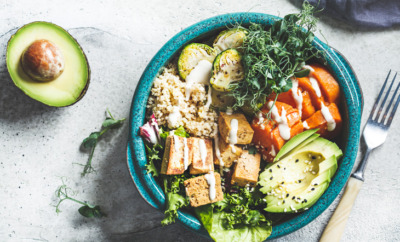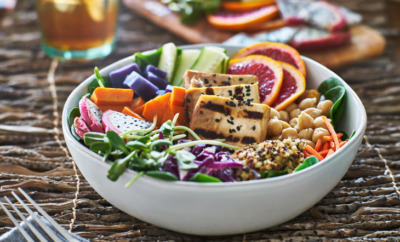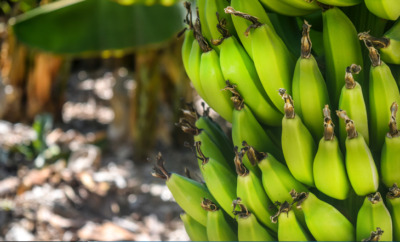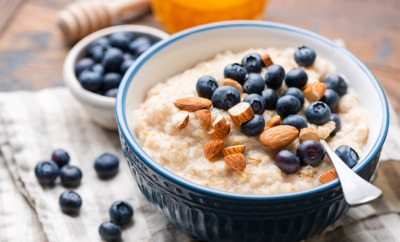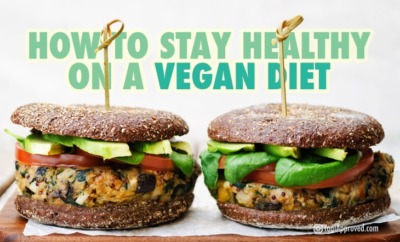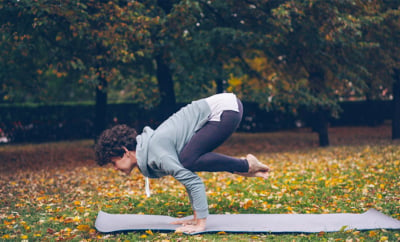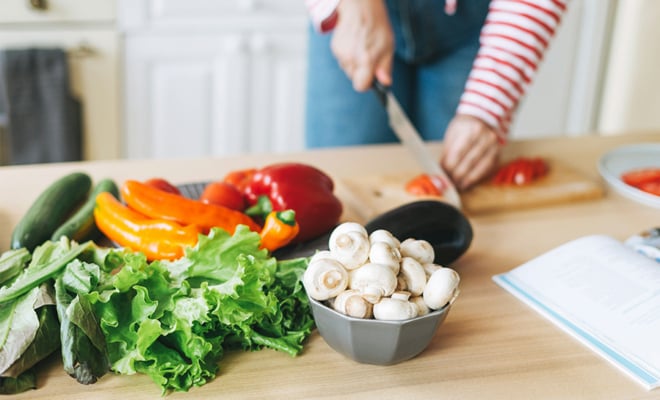Switching to a Plant Based Diet? Follow These 6 Tips on How to Go Vegan (It’s Easier Than You Think!)

6tipsHowToGoVegan Feature
If you’re thinking about switching to a plant based diet, it can seem a bit daunting. But all you need are a few tips on how to go vegan to get you started!
As a whole food nutritionist, one of the biggest challenges my clients feel about switching to a plant based diet is the mindset of “there’s so much I can’t eat.” Really this mindset should be changed to “wow, look at everything I get to eat!”
There are so many delicious options in a vegan diet, and even more importantly, you will feel great knowing that you’re fueling your body with healthy, fresh ingredients.
You don’t have to miss out on your favorite meals just because you omit meat and dairy.
From cauliflower pizza with arugula and roasted vegetables, sweet potato and black bean burgers, to mushroom and walnut tacos, you don’t have to miss out on your favorite meals just because you omit meat and dairy.
As a matter of fact, when you start getting creative with all of the flavors and textures you can use, you may be surprised to find out that the healthier vegan versions actually taste even better than the traditional recipes!
Don’t believe it? Try this vegan spin on a classic recipe: To-Die-For Vegan Cashew Creamy Mac and Cheese Recipe
But when you’re switching to a plant based diet, how do even know where to start? What are some tips on becoming vegan? Read on for six helpful pointers to get you started.
Here Are 6 Tips on How to Go Vegan and Switching to a Plant Based Diet:
Don’t worry – these six tips on how to become vegan are likely easier than you think!
1. Clear Out the Old
Simply start by clearing out the processed foods, meats, and dairy products from your kitchen. Make room for fresh vegetables, fruits, beans, and whole grains.
Once you have a clean slate, you can begin filling it up with healthy, nutritious foods. This is the first step to embracing a plant based diet. Which brings us to #2! . . .
2. Research Plant Based Protein Sources
A concern for many people wanting to go vegan is how and if they’ll get enough protein, and this is an important concern to address! A common misconception is that meat is the only source of high protein.
While meat does contain significant amounts of protein, it’s not the only source. When switching to a plant based diet, the first step is educating yourself on alternative protein sources.
Here are a few great plant based, vegan protein sources: beans and legumes, broccoli, nuts and seeds, edamame, peas, asparagus, tofu and tempeh.
Looking for more plant based protein sources? Read: A Vegan’s Guide to Protein: 20 Protein-Dense Foods You Should Add to Your Diet
3. Relearn Grocery Shopping
Filling your cart with fresh organic produce, dried beans, whole grains, and spices will not only save you money, but will also give you confidence that what you’re consuming does not have any added preservatives, sugars, sodium, or processed ingredients.
Shopping in the bulk section is best. You can try a variety of different nuts, beans, and spices for a fraction of the cost! This is a big life hack for any vegan!
Read: These 5 Vegan Foods Are High In Protein and Should Be In Your Plant-Based Diet
Speaking of cost, buying fresh organic produce can be expensive if you don’t store it properly and it goes to waste. So that brings us to proper storage . . .
4. Learn How to Keep Your Fresh Produce Fresh
The first thing to do when you get home from the store is clean your produce. Get it done so you can move on to more exciting things and not have to worry about it later.
Fill a large bowl or a clean sink with fresh water and a small amount of vinegar to clean your produce from dirt and the possible little bugs that may have caught a ride home with you in the base of your lettuce. After soaking and giving a little scrub if needed, make sure to dry completely.
Then, proper storage is key! Store your leafy greens, herbs, and celery upright in the refrigerator in a glass or bowl of water so they’ll stay crisp and last longer. Store your dried beans, grains, and spices in airtight glass containers to help keep the flavor locked in and make sure they don’t go stale.
5. Get Your Meal Prep On
Meal prep is the key to maintaining a healthy lifestyle. If you don’t have fresh, healthy food available to eat, you may be more likely to grab something quick and easy (which tends to not be so healthy).
Pick a day of the week to block out time to shop, clean your produce, and meal prep so that you can build on that throughout the rest of the week.
For example, roast up an entire baking sheet full of veggies, so you can make a Buddha Bowl, a delicious soup, and veggie tacos throughout the week.
New to meal prepping? Read: How to Meal Prep Like a Pro – Here’s Everything You Need to Know
6. Always Keep Healthy Snacks Easily Available
I always keep fresh fruit on my dinner table. That way it is super easy to grab an apple or banana on the go, or hand an orange to my kiddos when they get home from school.
Plan ahead. If you know you’re going to be stuck in a mid-morning meeting that might run over to lunchtime, carry a container of raw nuts in your bag. If you get stuck in rush hour on the way home, keep some nuts and dried fruit in the car to keep you from getting “hangry.”
Need some quick plant based snacks? Try this Vegan, Gluten-Free Curried Chickpea Wrap Recipe for Healthy Eating On the Go
7. Be Kind to Yourself
Switching to a plant based diet may take time. Not everyone’s journey is the same. Stay positive and allow yourself to have setbacks. It’s all part of the journey.
If you stumble, it’s okay. Remember that this is not a fad diet. Being vegan can be a life-changing, healthy way to thrive!
Part of being kind to yourself is honoring your body and staying healthy. Follow These 7 Tips to Stay Healthy on a Vegan Diet
The Takeaway on Switching to a Plant Based Diet
A plant based diet shouldn’t be intimidating. It just involves being an efficient shopper and taking the time to store your groceries properly. Remember making a lifestyle change isn’t something that happens overnight and it’s not always easy. Don’t give up if you stumble!
Giving up certain foods may be difficult in the beginning. But the healthier you eat, the more your body will begin to crave healthy foods.
Have fun with the dishes you create, enjoy cooking, and get creative in the kitchen. And go out there and start enjoying the health benefits of eating plants!
All included information is not intended to treat or diagnose. The views expressed are those of the author and should be attributed solely to the author. For medical questions, please consult your healthcare provider.


This Month's Letter
From the Editor
Monthly motivation and food for
thought from our founder.



